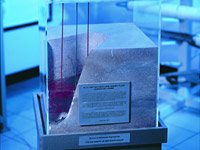| Introduction to Petrophysics - PTRL2018 |
|
|||||||||||||||||||||||||||||||||||||

Description Reservoir Rock and Fluid Properties: Porosity, Salinity, Permeability, Fluid Saturations, Darcy’s Law. The permeability coefficient. The measurement of permeability. Permeability of ‘dirty’ sands. Electrical and acoustic properties of reservoir rocks. Interpretation of fluid content data. Fundamentals of the behaviour of hydrocarbon fluids. PVT properties of oil-gas systems. Composition and phase diagrams of natural gases. Pseudo-critical properties of hydrocarbons. Surface tension and properties of the liquid and vapour phases. Properties of water and brines.
Laboratory Work: Experiments on porosity, permeability, capillary pressure, resistivity of reservoir rocks and PVT properties of crude oil. Introduction to the API standard laboratory equipment and their processes in measuring rock and fluid properties. Sample preparation from whole cores of different types of rock and shale. Understanding PVT properties of a mixture of hydrocarbon and their phase behaviour under different test conditions. Well log interpretation: Fundamentals of petrophysics and interrelation between petrophysical parameters. Borehole environment. Invasion profiles and invasion characteristics. Hydrocarbon mobility. Acquisition of petrophysical data. Data quality assurance. Presentation of petrophysical data. Measurement of natural gamma rays. Formation waters. Importance of formation water characteristics. The SP curve. Wellsite log evaluation. Formation resistivities. Shallow and deep resistivity measuring devices. Porosity related measurements with well logs in clean and shaly sands. Sonic (Acoustic), Formation Density and Neutron logs. Practical work with well log, core analysis and well pressure data.
|
||||||||||||||||||||||||||||||||||||||

| Contacts | Library | myUNSW | WebCT |